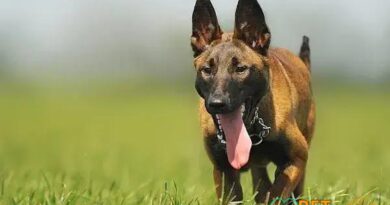What is Reatividade
What is Reatividade in Dogs?
Reatividade in dogs refers to a behavioral response where a dog reacts to certain stimuli in their environment, such as other dogs, people, or noises. This reaction can manifest as barking, lunging, or even aggression. Understanding reatividade is crucial for dog owners, as it helps in managing and modifying these behaviors effectively. The term encompasses a range of responses, from mild excitement to severe anxiety, and can vary significantly from one dog to another.
Understanding the Triggers of Reatividade
Identifying the triggers that cause reatividade in dogs is essential for addressing the behavior. Common triggers include unfamiliar dogs, loud noises, or sudden movements. Each dog may have unique triggers based on their past experiences and socialization. For instance, a dog that was not properly socialized during its early development stages may react more strongly to other dogs or people. Recognizing these triggers allows owners to create a safer environment for their pets and reduce the likelihood of reactive behaviors.
The Role of Socialization in Reatividade
Socialization plays a vital role in preventing reatividade in dogs. Early exposure to various environments, people, and other animals can help dogs develop confidence and reduce fear-based reactions. Proper socialization helps dogs learn appropriate behaviors and responses to different stimuli. It is important for dog owners to engage in positive socialization experiences, ensuring that their pets feel comfortable and secure in various situations, which can significantly decrease reatividade over time.
Signs of Reatividade in Dogs
Recognizing the signs of reatividade is crucial for dog owners. Common indicators include barking, growling, stiff body posture, and intense focus on the trigger. Some dogs may also exhibit signs of anxiety, such as panting, pacing, or attempting to escape. Understanding these signs allows owners to intervene early and manage their dog’s behavior effectively. It is important to note that reatividade can escalate quickly, so being aware of these signs can help prevent potential incidents.
Training Techniques to Manage Reatividade
Effective training techniques are essential for managing reatividade in dogs. Positive reinforcement training, where desired behaviors are rewarded, can help modify a dog’s response to triggers. Techniques such as desensitization and counter-conditioning can also be beneficial. Desensitization involves gradually exposing the dog to the trigger at a distance where they feel safe, while counter-conditioning aims to change the dog’s emotional response to the trigger. Consistency and patience are key in implementing these techniques successfully.
The Importance of Professional Help
In some cases, reatividade may be too challenging for owners to manage on their own. Seeking professional help from a certified dog trainer or behaviorist can provide valuable insights and tailored strategies for addressing reatividade. Professionals can assess the dog’s behavior, identify specific triggers, and develop a comprehensive training plan. Their expertise can be invaluable in helping owners navigate the complexities of reatividade and improve their dog’s behavior.
Environmental Management for Reactive Dogs
Environmental management is a critical component in addressing reatividade. This involves modifying the dog’s surroundings to minimize exposure to triggers. For example, using barriers like baby gates or crates can help create a safe space for the dog. Additionally, avoiding high-stress situations, such as crowded areas, can prevent reactive behaviors from escalating. By managing the environment, owners can help their dogs feel more secure and reduce the likelihood of reatividade.
The Impact of Breed on Reatividade
Different dog breeds may exhibit varying levels of reatividade based on their genetic predispositions and temperamental traits. Some breeds are naturally more prone to reatividade due to their guarding instincts or high energy levels. Understanding a dog’s breed characteristics can help owners anticipate potential reatividade issues and tailor their training approaches accordingly. However, it is essential to remember that individual temperament and experiences also play significant roles in a dog’s behavior.
Long-Term Management of Reatividade
Managing reatividade is often a long-term commitment that requires ongoing effort and dedication. Consistent training, socialization, and environmental management are crucial for reducing reatividade over time. Owners should remain patient and celebrate small victories along the way. Regularly assessing the dog’s progress and adjusting training techniques as needed can lead to significant improvements in behavior. With perseverance and the right strategies, many dogs can learn to cope with their reatividade effectively.




